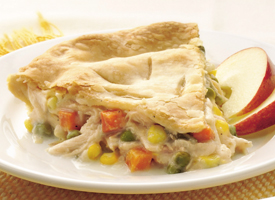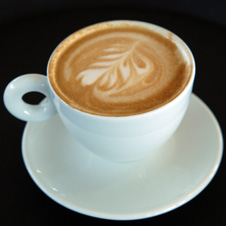Is it me or…
I don’t know how true this is in reality, but I’ve noticed something, a difference between British websites that post recipes and US sites that post recipes. Perhaps it might be that I’ve only seen the really BIG sites, the one from the BBC and others from the big name TV chefs.
The US sites will tell you to use a can of this, a can of that and to buy the pastry (if you’re using) from the supermarket. A load of ingredients will be anything but fresh and will have been processed to within an inch of their lives.
The British sites I’ve seen are, frankly, food porn. They’re full of stuff the great British middle classes have come to take for granted in their food shows. Balsamic this, Morrocan that and full of ingredients that nobody where I am currently living has even heard of .
Needless to say, the supermarket plays a large part in sourcing these things too.
On the whole, I’m beginning to find the US sites more useful because they’re more practical and less pretentious. I can mostly get straightforward ingredients, fresh vegetables, fresh meat and fish (in the winter only for the fish). I’m more likely to get what I need from my local vegetable walah or the nearby small shops than the supermarket – because the supermarket is 15 or so kilometres away and far more expensive.

Stalls like these are all over Pakistan. The veg is only couple of days old. Very handy and addictive if you’re a foodie.
Even if the recipe talks of tinned foods, I can get the fresh versions so it’s better and cheaper all round for me.
Another point is that anything that talks about using a food processer is out because I don’t have one. Even if I did, the power supply is unreliable and there are frequent power cuts, sometimes scheduled, often not. And they can last up to ten hours though more often it’s one or two hours. So I have to do my cooking the old fashioned way.
All these factors became an issue when I was looking for something new to try because my repertoire as it stands was (is) getting a bit staid.
Chicken Pie, the cooking
I found this recipe on a site which I didn’t pay much attention to but I can’t find right now. It’s not something I developed myself.
It’s dead easy and came out really well.
The pie filling was dead easy to do. I only had to fry the onions and begin frying other veggies in butter before adding water and a stock cube.
I didn’t realise the difference frying in butter makes. I normally use extra virgin olive oil, which I’ve come to love. Butter brings out something very different in the vegetables a really sweet aspect I didn’t expect.
The chicken itself was a bit harder to do. Because the recipe calls for cooked chicken, I boiled it for an hour before using it.
Then I had to begin frying it in butter and add flour & milk. This is something I’ve never tried before ; I found it comes out as more exotic and exciting than it has a right to be, a creamy, thick mixture which gives the dish a sense of luxury. Though, I think I could have used a bit more milk than I did. I found the 125 mls in the recipe to be…I won’t say inadequate but I found it wasn’t enough. Maybe it’s just me.
Normally, when I do pastry I mix the butter and flour with my hands to prepare the breadcrumb-like mixture. After adding water or milk (depending on what dish I’m doing) I usually mix it with a fork or a spoon because I really dislike that slimy, nasty seeming mixture on my hands. However, my pastry never comes out as easy to roll later on. So this time I did it all by hand.
I think I’ve learned something new here because my pastry has never come out so well. Mixing it by hand, making it into dough (even though it’s not dough) by hand makes all the difference. I could do it with a thoroughness I’ve never been able to achieve before. The results were excellent later on.
I found this to be a great recipe; straightforward, practical, warming and tasty, luxurious even. It’s become another staple in my recipe list.
Here’s the recipe itself. Apologies to whoever developed it, I never expected to be writing about it so I didn’t save the link. Sorry!
Chicken pie
Ingredients
Serves: 8
- 2 sheets shortcrust pastry
- 60g butter
- 1 small onion, minced
- 2 sticks celery, chopped
- 2 carrots, diced
- salt and pepper to taste
- 2 chicken stock cubes
- 500ml water
- 3 potatoes, peeled and cubed
- 225g cooked chicken, cubed
- 3 tablespoons plain flour
- 125ml full fat milk
- 3 tablespoons chopped fresh parsley
- 1 teaspoon chopped fresh oregano
Method
Prep:20min › Cook:1hr › Ready in:1hr20min
- Preheat oven to 220 C / Gas 7. Roll out one piece of pastry and place in a 20cm pie dish and set aside.
- Place 1/2 of the butter in a large frying pan. Add the onion, celery, carrots, salt and pepper. Cook and stir until the vegetables are soft. Stir in the stock cubes and water. Bring mixture to the boil. Stir in the potatoes, and cook until tender but still firm.
- In a medium saucepan, melt the remaining butter. Stir in the chicken and flour. Add the milk, and heat through. Stir the chicken mixture into the vegetable mixture, and cook until thickened. Add fresh herbs. Pour mixture into the unbaked pastry case. Roll out the top piece of pastry, and place on top of filling. Flute edges, and make 4 slits in the top to let out steam.
- Bake in the preheated oven for 15 minutes. Reduce oven temperature to 180 C / Gas 4 and continue baking for 20 minutes, or until pastry is golden brown.







